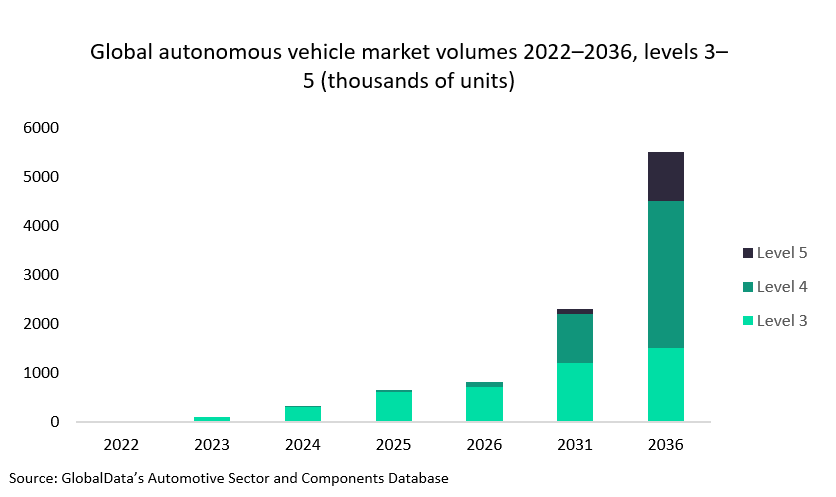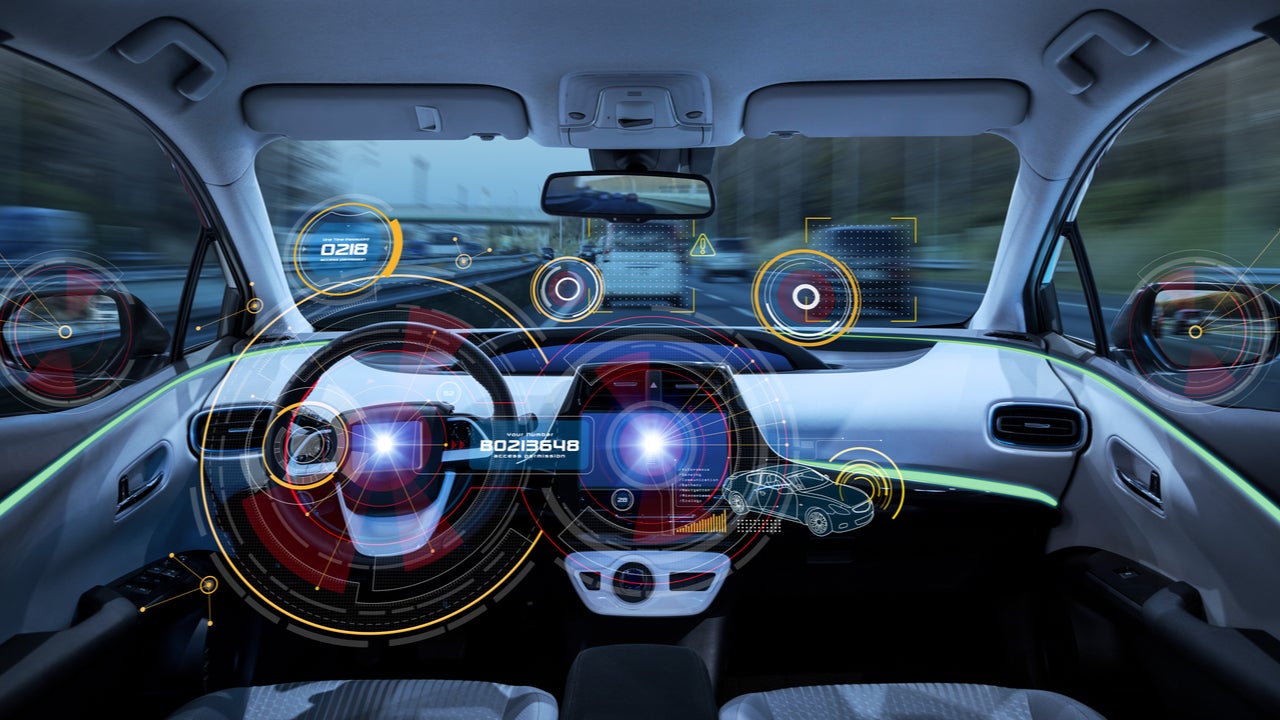The UK Law Commission’s final report on regulation and legal accountability around autonomous vehicles can act as a stepping stone for improved confidence among consumers, regulators, and insurers. Completely autonomous (level 5) vehicles are forecast to start production from 2030, with around one million units set to be produced in 2036 according to GlobalData.
The regulatory framework suggested by the UK Law Commission will be a key trigger for the progression of autonomous vehicles. Clear definitions of liability, along with a black-and-white determination of a car’s driverless capabilities, should help pave the way for greater support and acceptance in the development of self-driving vehicles.

With a growing number of legal cases surrounding incidents involving partially automated vehicles, the framework will aid insurers in assessing liability more effectively. As autonomous vehicles collect and report vast swathes of data in real-time, making this data accessible will also act as a hugely important asset to investigators in assessing driver or technological fault.
For insurers, explicitly stating where liability falls in the event of an accident has been a major sticking point. By redefining the driver as a “user-in-charge” and allocating responsibility to the manufacturer, insurance should become more straightforward for providers. The introduction of completely autonomous cars in the future will mark a shift in the way motor insurance risks are established as driver error is fundamentally removed. Until the point that vehicles are definitively self-driving, the driver is still accountable for incidents where the technology can only be considered as “driver-assisting.” This will give insurers a good indication of the pathway towards this new technology, allowing them to gain a better understanding of the technology, through trials and tests, before developing insurance policies.
However, these suggestions are yet to be enacted into law – a process that will take some time. The point at which a vehicle’s technology moves from driver-assisting to autonomous is not yet explicitly defined. Nor has the capacity of manufacturers to create fully autonomous vehicles yet been realised. As the technology continues to develop and as more information is generated, a clearer timeframe on the rollout of truly autonomous vehicles will be seen. The process is still in its relative infancy, but insurers will be pleased to see a pathway for autonomous vehicles to slowly come to the fore.
How well do you really know your competitors?
Access the most comprehensive Company Profiles on the market, powered by GlobalData. Save hours of research. Gain competitive edge.

Thank you!
Your download email will arrive shortly
Not ready to buy yet? Download a free sample
We are confident about the unique quality of our Company Profiles. However, we want you to make the most beneficial decision for your business, so we offer a free sample that you can download by submitting the below form
By GlobalData





